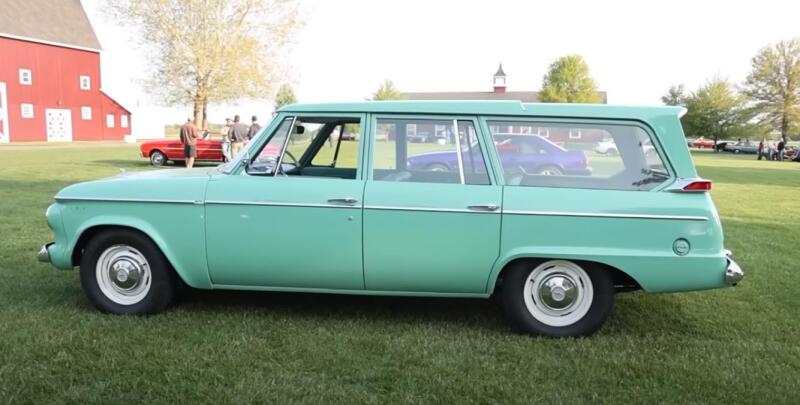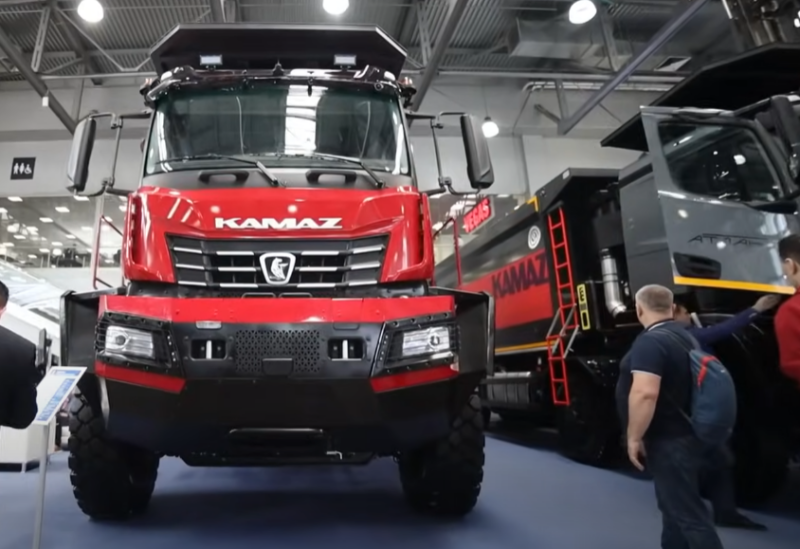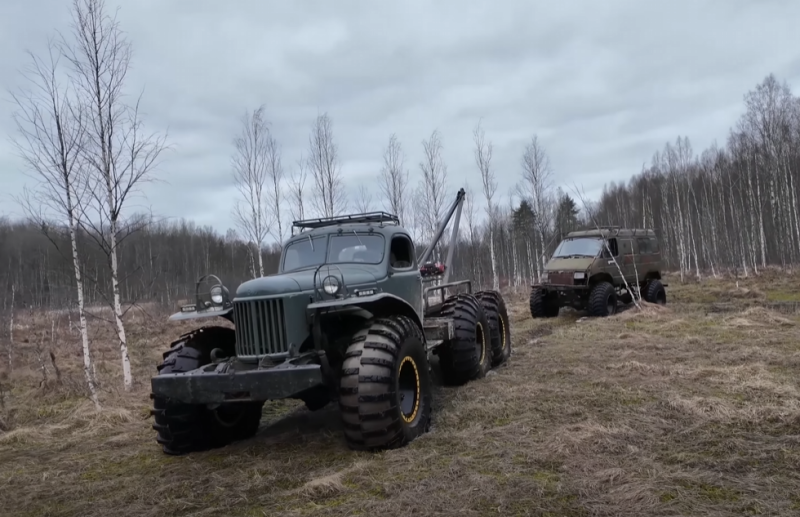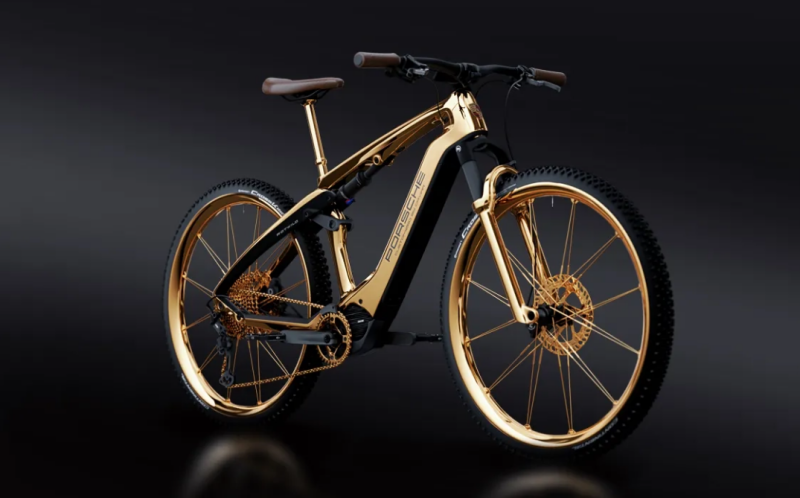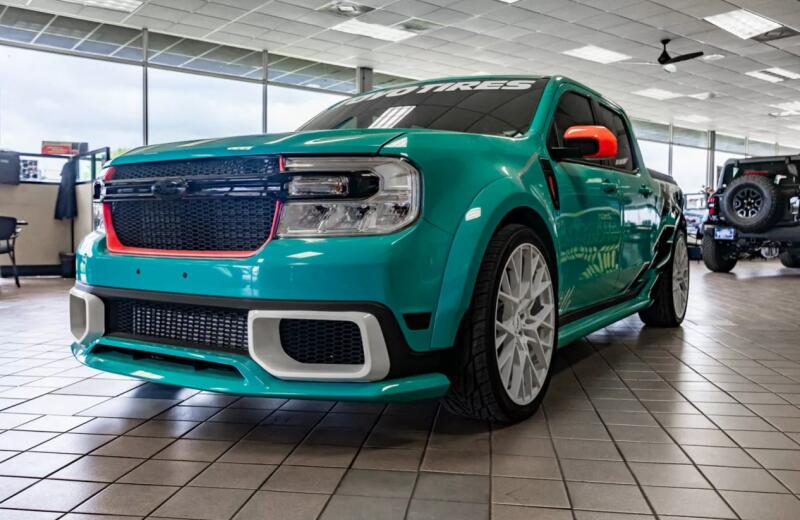Station wagon boom
Production of cars in this body type quickly gained momentum from the early 1950s and even doubled every three years until 1957. As a result, by the end of the decade, the station wagon had become a model whose sales reached almost one million cars per year.
 Studebaker Wagonaire – front. Photo: YouTube.com
Studebaker Wagonaire – front. Photo: YouTube.comIn the 1960 model year, 923 station wagons were produced in the United States, and they represented about 323% of all vehicles produced that year in the United States. The leader in this area, as expected, was Ford, which was at the top of the ranking with its 15,6 units. In second and third place were Chevy and AMC, producing 292 and 304 station wagons, respectively.
The automaker we will talk about today - Studebaker - was far behind them, very far. But they can boast that in a short period of time they released one of the most unique and recognizable models of the decade.
"Candy out of nothing"
It's unlikely that another car company has ever squeezed out as many original and interesting products for as little money as Studebaker did in the 1960s. By 1961, the company already had a sad eight-year experience of survival. They were constantly in search, trying to find a way out of the current situation and avoid bankruptcy.
 The original Studebaker Wagonaire roof design was manually closed. Photo: YouTube.com
The original Studebaker Wagonaire roof design was manually closed. Photo: YouTube.comAnd so, at some point, it seems that luck smiled on them in the person of the new president, Sherwood Egbert. He was definitely not ready to just give up, and under his leadership the enterprise in the last years of its existence began very “turbulent activity.” The most notable new products at that time were the provocative Avanti and Gran Turismo Hawk personal coupes.
But there was one more novelty worthy of attention. This is the Wagonaire, a station wagon with an innovative sliding roof. The car was created on the basis of the Lark model, a compact muscle car that was first released in 1959, and, I must say, immediately resonated with buyers. In the first year, 131 copies were sold.
But the long-awaited success was short-lived this time too. The Indiana automaker once again faced stiff competition from Detroit, and sales of the Lark began to decline. As a result, in 1961 production fell to 66 units.
 The Wagonaire station wagon can carry oversized cargo. Photo: YouTube.com
The Wagonaire station wagon can carry oversized cargo. Photo: YouTube.comThe company then hired industrial designer Brooks Stevens. He was entrusted with the development of a new revolutionary car that would help the company stay afloat. Since, as we know, the financial situation in the company was not good, there was no talk of producing the car from scratch.
With minimal costs, Stevens began carefully by changing the forms. It widened the rear end slightly and smoothed out the fenders, making the 1962 Lark coupes, convertibles and sedans more attractive.
However, the biggest changes came to the Lark station wagon when Stevens gave it a major makeover in 1963. The designer abandoned everything behind the A-pillars in favor of a flatter roofline, thin pillars, tall windows and sharply defined rear fenders. The new car, included in the Lark Daytona lineup, is called Wagonaire. But at the same time, many people note the fact that both the name and appearance of the car were strikingly similar to another new product developed by Stevens - the Jeep Wagoneer.
Manual roof
Stevens included one unique feature for the Studebaker station wagon, which he carried over from his 1959 Scimitar concept phaeton. Namely, the part of the roof located directly above the cargo compartment could be retracted into the front panel. The car was equipped with a special mechanism with a pair of tracks, which allowed the rear roof panel to slide forward along the headliner. Thus, the retractable roof left the trunk section completely open. This allowed owners to transport items that, due to their size, would not fit in a regular station wagon.
 The rear window in the Wagonaire opened and closed from the street. Photo: YouTube.com
The rear window in the Wagonaire opened and closed from the street. Photo: YouTube.comBut, however, bringing the concept to life was not as easy as it initially seemed. The original roof design required X-frame reinforcements, counterweights at the front corners of the car, and four downpipes along the roof. The latter, theoretically, were supposed to drain rainwater. But in fact, they required constant attention, as they often quickly became clogged with debris and water began to drip into the interior.
This provoked the first negative reviews from customers at the very beginning of Wagonaire sales. Then the company decided to launch production of a version with a fixed roof, which was $100 cheaper. At the same time, they did not stop producing cars with a sliding roof structure.
 Control panel and front “sofa” of Wagonaire. Photo: YouTube.com
Control panel and front “sofa” of Wagonaire. Photo: YouTube.comAdvertisements presented the Wagonaire as a "three-in-one car." It could function as a work station wagon, family sedan and convertible. The dimensions of the Wagoner were as follows:
✅ length - 4831 mm
✅ width - 1810 mm
✅ height - 1448 mm
✅ wheelbase - 2870 mm
The models were six-seater, with the installation of a third row of seats available as an additional option. Then the number of passengers could increase to nine.
Under the hood of the Wagonaire
As for the technical equipment of the Wagonaire, it is known that in 1963 and 1964 OHV engines of 170 cc were used. cm and a power of 112 hp. With. or V8 259 cc. cm and a power of 180 hp. With.
It was also possible to choose from two high-performance engines originally developed for the new Avanti sports coupe. It was a high-compression V-8 producing 240 horsepower. With. engine R1, and equipped with a Paxton supercharger - R2, which developed power somewhere between 280 and 300 hp. With. What's more, either could be ordered with a performance package that included a rear stabilizer bar, a limited-slip differential, and stiffer springs and shock absorbers.
By the end of 1963, Studebaker closed its South Bend assembly line, and beginning in 1964, Wagonaires were built only at their Canadian plant. They were already equipped with V8 engines produced at the Canadian General Motors plant in McKinnon. The same power units were used in Canadian Pontiacs.
 Under the hood of the Wagonaire. Photo: YouTube.com
Under the hood of the Wagonaire. Photo: YouTube.comAs for the sales volume, the growth of which the company's management so counted on, Wagonaire, unfortunately, was unable to reverse the situation. Even in the first year of its appearance on the market, expectations were not met. In total, for the entire period from 1963 to 1966, when Studebaker completely stopped its production, about 12 station wagons with a retractable roof were sold. How many of them have survived to this day can only be guessed.
